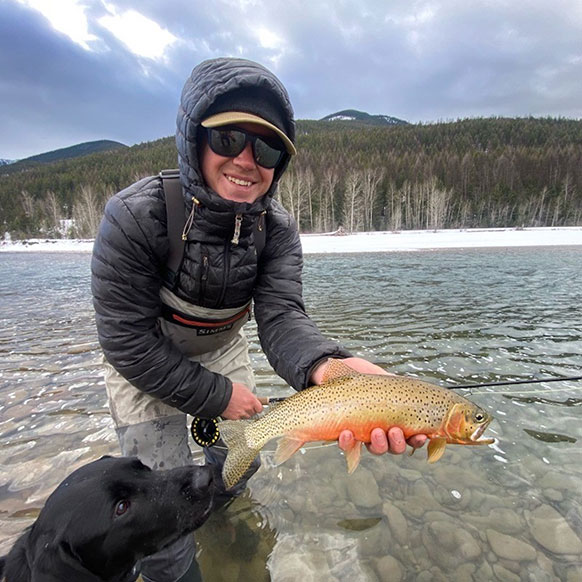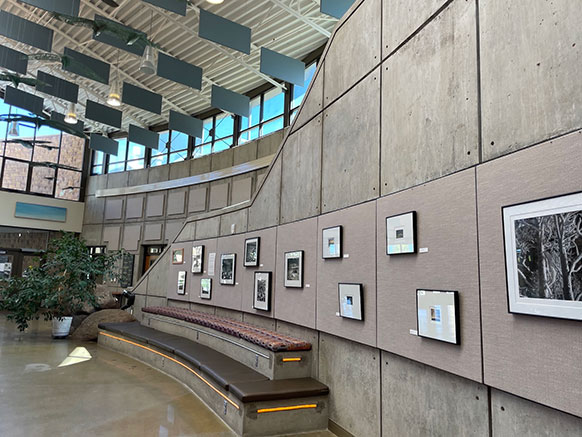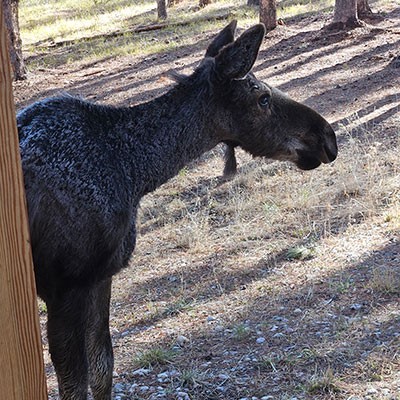No Slides Entered.
New Community Hike In Conjuction with Summer Moose Day
Summer Moose Day activities will span a weekend -- Saturday and Sunday, July 20-21 -- and will include the usual routine of volunteers heading out on various trails to spot and count moose in the mountains outside of Laramie. However, this year’s event includes a new wrinkle: a group hike in Curt Gowdy State Park.
“We will be partnering with Wyoming State Parks this year to offer a group Summer Moose Day hike Saturday, July 20, at the North Crow Reservoir in Curt Gowdy State Park,” says Mason Lee, senior project coordinator in the University of Wyoming Biodiversity Institute. The hike begins at 8 a.m. and ends at 10 a.m.
“We’ll start the hike with a short moose biology talk, and then we’ll conduct our Moose Day survey as a group while following Moose Day protocol,” Lee adds. “Participation in this guided hike does require the purchase of a daily Wyoming State Parks pass for Curt Gowdy.”
For the traditional portion of Summer Moose Day, volunteers can look for moose either day but do not have to participate both days. There are slightly more summer routes than during Winter Moose Day because there are a few routes that volunteers can drive rather than hike. There are 22 routes in the Snowy Range; 19 in the Pole Mountain area; and one route in the Arlington area.
“Like the past few years, there may be multiple survey groups surveying each route,” Lee says. “This repetition is very important for our data analysis.”
While volunteers can make their treks any time of day, Lee strongly recommends an early morning start, which is when moose are most active. Community scientists will record observations of moose or their signs, which include tracks/hoofprints, bed areas, scat droppings and browse on aspen and willows.
During the last Summer Moose Day, conducted in 2022, 16 moose -- 10 males, five females and one calf -- were spotted. That number tied for the record of most moose witnessed, which first occurred in 2016.
“We will not be holding an in-person training for Summer Moose Day, so new volunteers will need to watch the prerecorded online training and complete a training quiz before participating,” Lee says.
Moose Day registration opens today (Tuesday) and runs through Monday, July 15. To register, click here.
The data gathered from Summer Moose Day are shared with biologists at UW. Biologists use the data collected by community scientists to further their understanding of the population densities of local moose, their reproductive rates, summer habitat quality, their winter ranges and how these variables change over time.
More will be learned after Dave Christianson, an associate professor in the UW Department of Ecosystem Science and Management, and his graduate students analyze the Summer Moose Day data as well as external factors that can affect moose counts, Lee says.
Both summer and winter Moose Day events are geared toward increasing the public’s understanding of moose in the Laramie area and involving the public in asking and answering questions. The events are an extension of the original program, Moose Day, held by Nature Mapping Jackson Hole (NMJH) in Jackson each winter. NMJH is a citizen science program created by the Jackson Hole Wildlife Foundation.
Share This Post

These two moose were spotted in the Sand Lake area of the Snowy Range as part of the UW Biodiversity Institute’s 2022 Summer Moose Day. (Dennis Saville Photo)
Social Media
Latest News



Archives
- All
- October 2025
- August 2025
- July 2025
- June 2025
- May 2025
- April 2025
- March 2025
- February 2025
- January 2025
- November 2024
- October 2024
- September 2024
- August 2024
- July 2024
- June 2024
- May 2024
- April 2024
- March 2024
- February 2024
- January 2024
- December 2023
- November 2023
- August 2023
- July 2023
- April 2023
- September 2022
- August 2022
- July 2022
- June 2022
- May 2022
- April 2022
- March 2022
- February 2022
- January 2022
- December 2021
- November 2021
- October 2021
- September 2021
- August 2021
- May 2021
- April 2021
- March 2021
- October 2020
- August 2020
- July 2020
- January 2020
- March 2019

